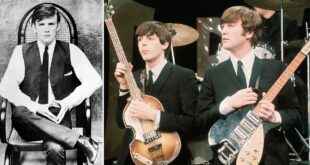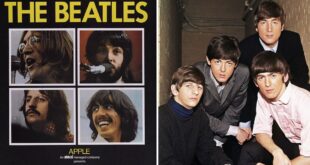[ad_1]
Over forty years later, Thriller remains a titanic smash and the best-selling album of all time. With over 70 million copies sold, it far outstrips second-biggest AC/DC’s Back To Black on 50 million, while Pink Floyd and The Eagles albums, and Whitney’s Bodyguard soundtrack all sold 45 million or less.
Jam-packed with hits like Beat It and Billie Jean, it was the seventh and final single that would also become the most iconic, thanks to a ground-breaking video that fulfilled MJ’s wildest dreams and then broke his heart.
Despite its staggering success, Michael Jackson would later declare: “I want to do what’s right. I would never do anything like that again.” But why would anyone say that of a masterpiece…?
The album first topped the US charts on February 26, 1983 and had sold over 32 million copies by the end of that year. Most albums yield two or three hits if they are lucky and never save the best for last but a stroke of creative and business genius decided to turn Thriller (released that November) into a cultural sensation.
Not just a supreme artist, MJ was also hugely ambitious and business savvy and he wanted his album to end the year back at number one after it had slipped down in July. He was also a huge fan of director John Landis’ 1981 film An American Werewolf in London and approached him to make a video like nothing ever seen before.
Two weeks before the short film’s debut, Michael Jackson demanded it be destroyed and everyone involved scrambled to hide everything before he got to it.
Jackson’s lawyer at the time, John Branca described how Jackson called him and demanded all the destruction of all negatives because Thriller jeopardised his membership of Jehovah’s Witnesses: “He (Jackson) said the Jehovah’s Witnesses heard he was doing a werewolf video. They told him that it promoted demonology and they were going to excommunicate him.”
Branca immediately called Landis and the negatives were taken from the labs and locked securely away in the lawyer’s office.
Meanwhile, the distraught star had locked himself in his bedroom. He was dedicated to his church – famously even going doorstepping in a hat and fake moustache to canvas for new converts – but he also loved the Thriller video he had helped create.
Michael Jackson’s security chief, Bill Bray, called Landis worried about his charge who hadn’t eaten for days, barricaded in at his Encino estate, Hayvenhurst House.
Landis said: “Bill and I kicked in the door, knocked it down, and Michael was lying there. He said, ‘I feel so bad.’ I said, ‘Michael, have you eaten?’ He hadn’t eaten. It was weird. I just said, ‘Look, I want you to see a doctor right now.’”
The following day, Landis went back to see the star to tell him they had not destroyed the negatives for Thriller: “(Michael said) ‘I’m sorry, John. I’m embarrassed.’
“I said, Michael, I wouldn’t let it be destroyed. He went, ‘Really? Because I think it’s really good.’ I go, ‘Michael, it’s great and you’re great.'”
Extraordinarily, two weeks later a star-studded Los Angeles premiere at Crest Theater included Diana Ross, Warren Beatty, Prince, and Eddie Murphy. Michael himself hid in the projectionist’s room and would not come out even when the cheering crowd demanded it be played a second time.
As for his mixed feelings about Thriller, a compromise was reached and a special disclaimer was added at the start of the film: “Due to my strong personal convictions, I wish to stress that this film in no way endorses a belief in the occult.”
In a later statement, he said: “I just intended to do a good, fun short film, not to purposely bring to the screen something to scare people or to do anything bad. I want to do what’s right. I would never do anything like that again.”
 FARRATA NEWS Online News Portal
FARRATA NEWS Online News Portal






